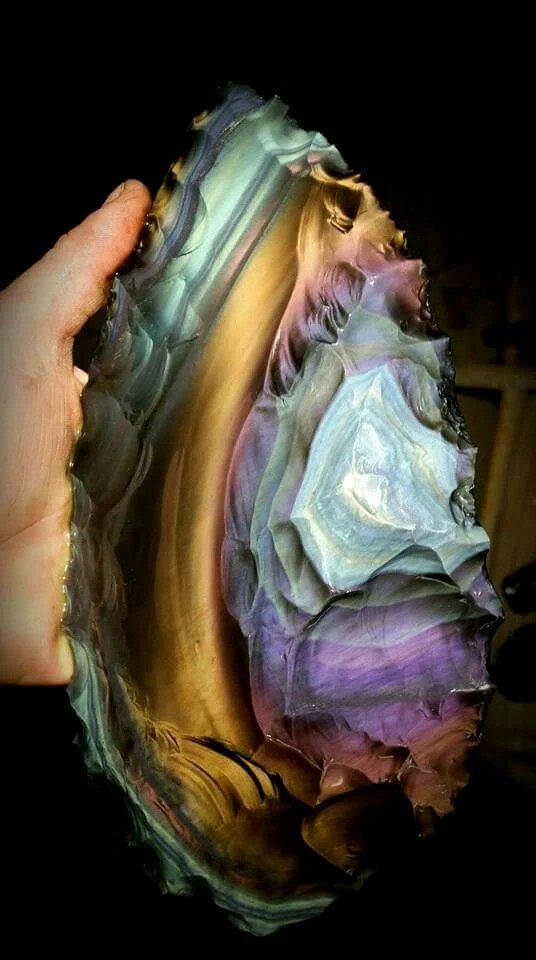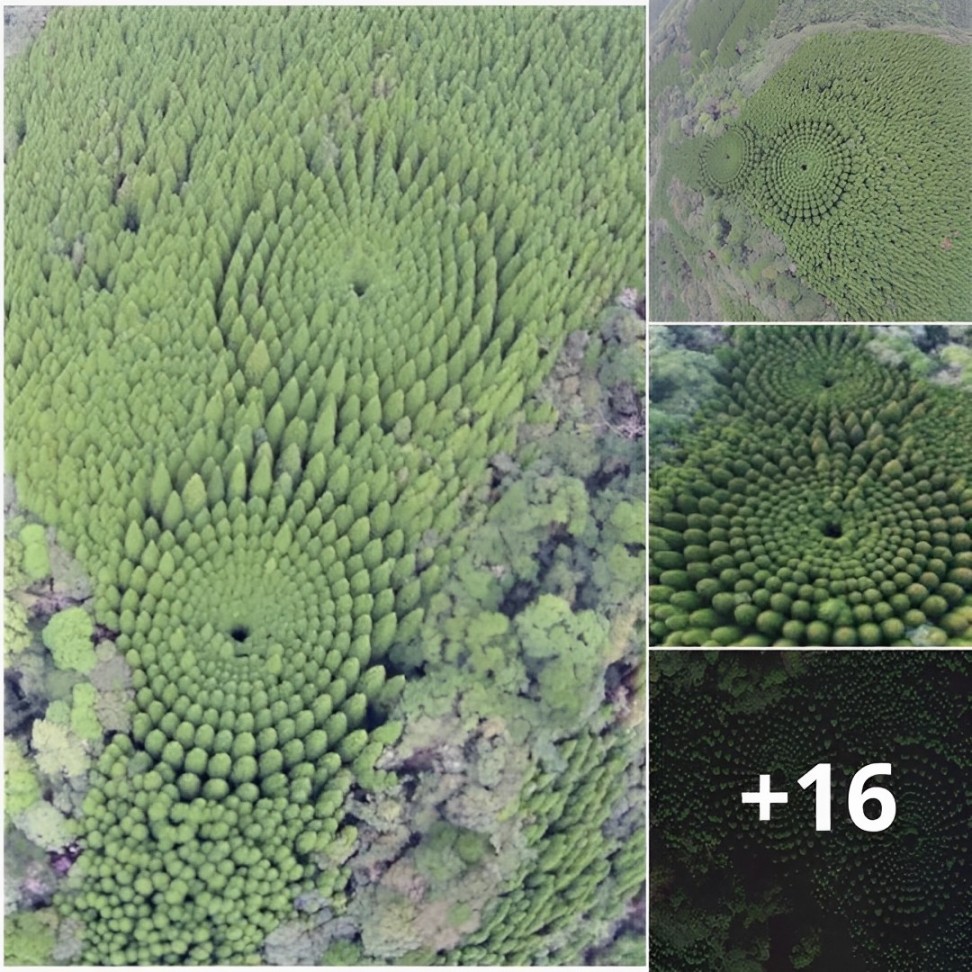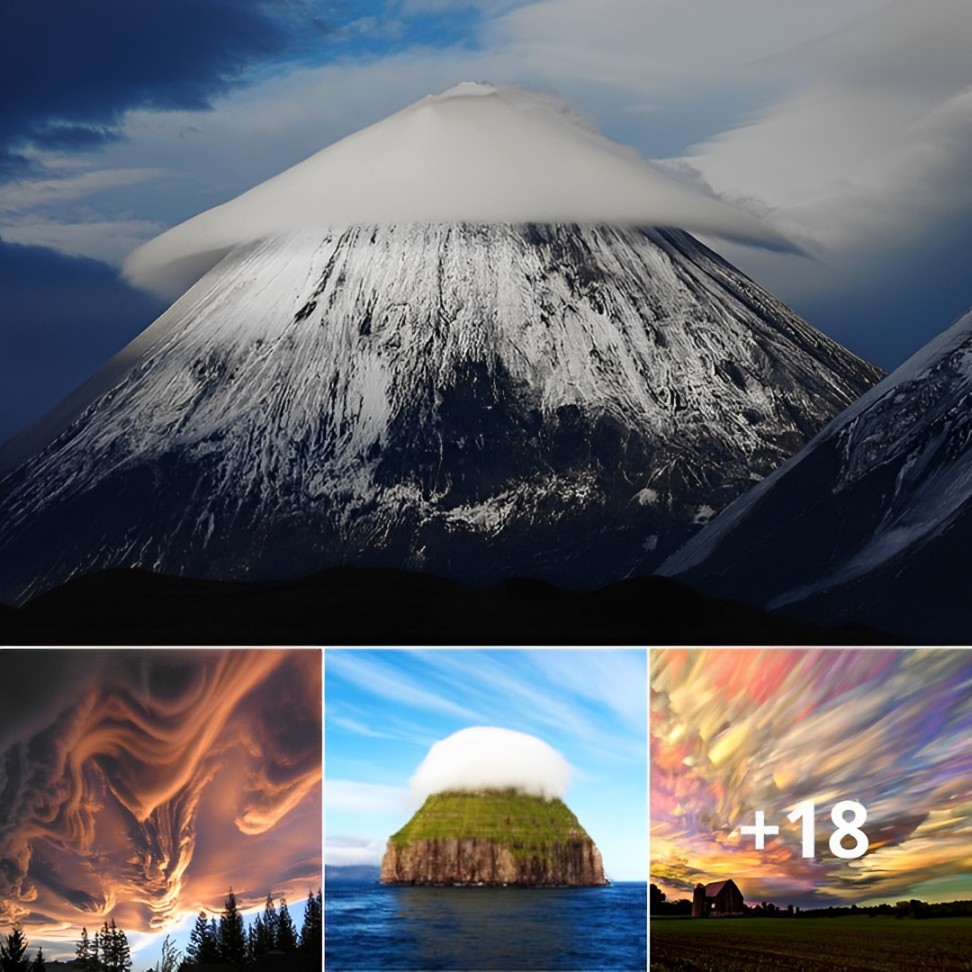The natural world is a treasure trove of breathtaking sights, from towering mountains to cascading waterfalls. However, we often overlook the smaller wonders that are hidden beneath the earth’s surface – crystals and minerals. These fascinating substances come in a variety of shapes and colors, each possessing a unique and striking beauty.
While many people use the terms “crystal” and “mineral” interchangeably, there is actually a difference between the two. A crystal is any solid material that has an organized structure, with atoms arranged in precise distances and angles. In contrast, minerals are naturally occurring, inorganic substances that have crystalline structures. This means that all minerals must be crystals, but not all crystals are minerals.
With over 4,000 naturally occurring minerals in the world, there is no shortage of stunning specimens to admire. We’ve compiled a list of 18 of the most beautiful crystals and minerals for you to marvel at. One such example is olivenite, a copper arsenate mineral that ranges in color from olive-green to yellow or brown. It often occurs as globular aggregates of acicular crystals or has a velvety luster.
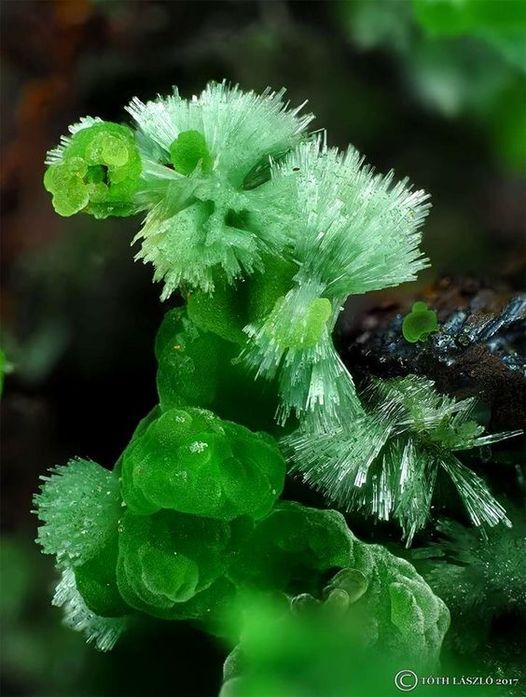
Agate: A Common and Colorful Quartz Formation
Agate is a popular rock formation that falls under the chalcedony group in the quartz family. It’s commonly found in volcanic rocks worldwide, occupying veins or cracks in the rock, and comes in various colors. One of its unique varieties is lace agate, which displays a lace-like pattern with eye-catching forms like swirls, bands, and zigzags. Typically, this stone has a red and white color combination, but it also comes in yellow and gray shades. Brazil, India, and the United States are currently the primary sources of agate worldwide.
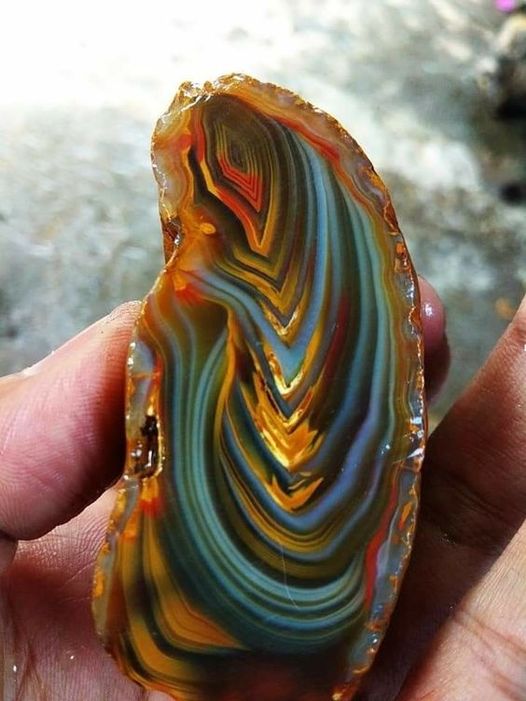
Grape Agate is a type of mineral that is known as Botryoidal Purple Chalcedony scientifically. However, it is marketed under the name Grape Agate. The word Botryoidal refers to the small spherical crystals that are naturally formed together in a round shape. Grape Agate gets its name from its purple color and the way it clusters together in bunches that resemble grapes. These grape-like clusters are very small, measuring between 2-8mm and can come in different colors, such as white, gray, green, or blue.
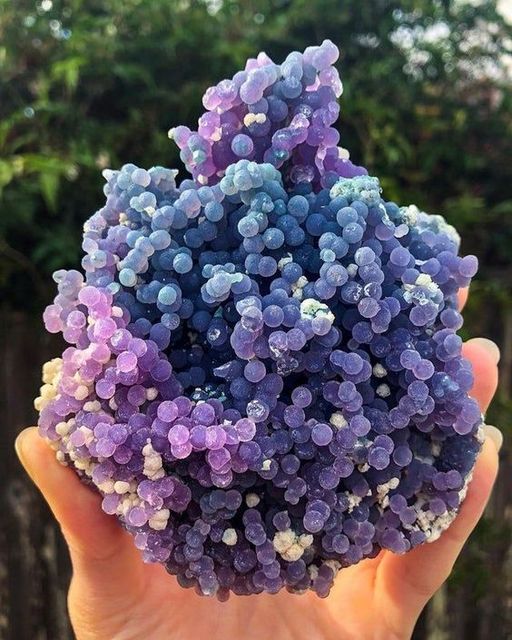
Rainbow fluorite is a type of mineral known as fluorite or fluorspar. This mineral typically appears transparent and colorless in both visible and ultraviolet light, but impurities can give it a range of colors. Rainbow fluorite, for example, displays a combination of colors including purple, blue, green, clear, and yellow in one crystal. It has a striped appearance and can vary from transparent to opaque.
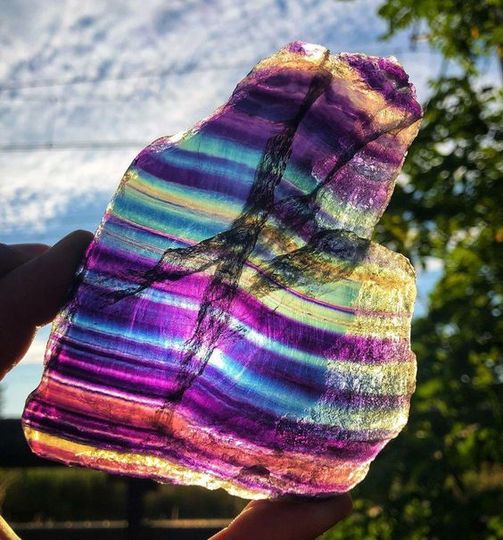
Let’s talk about Apophyllite, a type of mineral belonging to the group of phyllosilicates. The name itself comes from the Greek word “apophylliso” which means “it flakes off”. This is because Apophyllites tend to flake apart when exposed to heat due to the loss of water. Typically, these minerals are found as secondary minerals in vesicles within basalt or other volcanic rocks. They are quite prevalent and can be found in various famous mineral localities around the world, such as Jalgaon in India, the Harz Mountains of Germany, Mont Saint-Hilaire in Canada, and Kongsberg in Norway. So, if you’re a mineral enthusiast, keep an eye out for Apophyllites!

Clinoclase is a mineral made of copper that is not commonly found in nature. It typically forms needle-shaped crystals in the fractured weathered zone above copper sulfide deposits. The mineral gets its name from the Greek words “klino,” meaning “incline,” and “klasma,” which translates to “fraction.” This refers to the mineral’s inclined cleavage planes. Clinoclase has a vitreous, translucent appearance and can range in color from dark blue to greenish-black. When held up to the light, it appears blue-green. Although crystal formations are rare, the mineral can sometimes be found in needle-like or tabular shapes, as well as radial fibrous spherical aggregates as crusts and coatings.
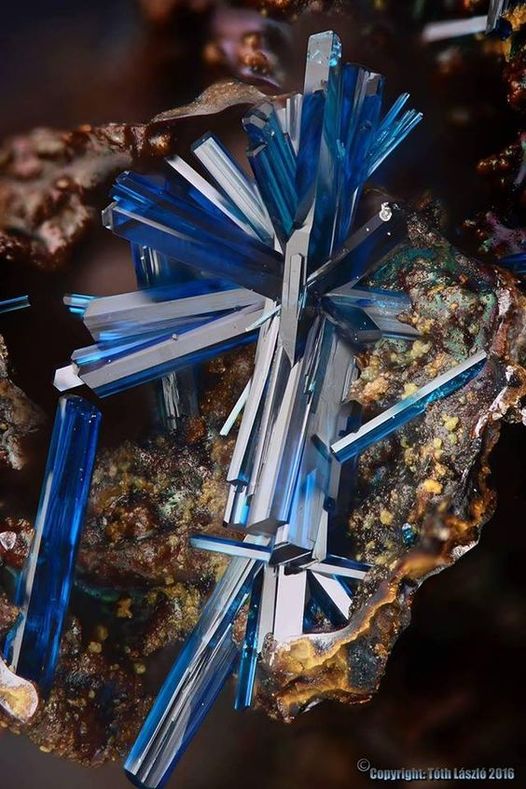
Red Fox Agate is an exceptionally rare and distinctive geode found in a remote corner of the Argentinean Andes. It’s believed to have originated from a volcanic source and boasts an inner surface that’s bubbled and textured, composed primarily of Botryoidal Hematite. This intriguing layer is then encased by agate before revealing its outermost layer, which reacts to UV light. When exposed to fluorescent lighting, the crystal emanates a stunning lime-green glow that’s truly mesmerizing.
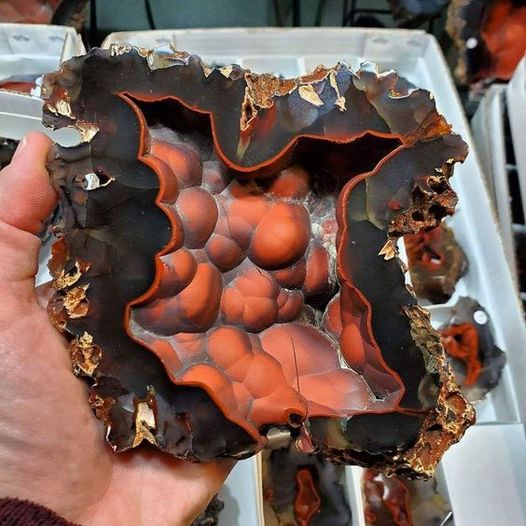
Aragonite is a type of mineral made up of carbonate. It is one of the most commonly occurring crystal forms of calcium carbonate. The photo shows Aragonite sprays in clay, which can be seen clearly under fluorescent light. It is usually found in Molina de Aragón in the Province of Guadalajara in Castilla-La Mancha, Spain. In 1797, it was named after this region. Aragonite is created by both biological and physical processes, including precipitation from marine and freshwater environments. It can come in columnar or fibrous shapes, and sometimes appears in branching helictitic forms called flos-ferri, which means “flowers of iron”.
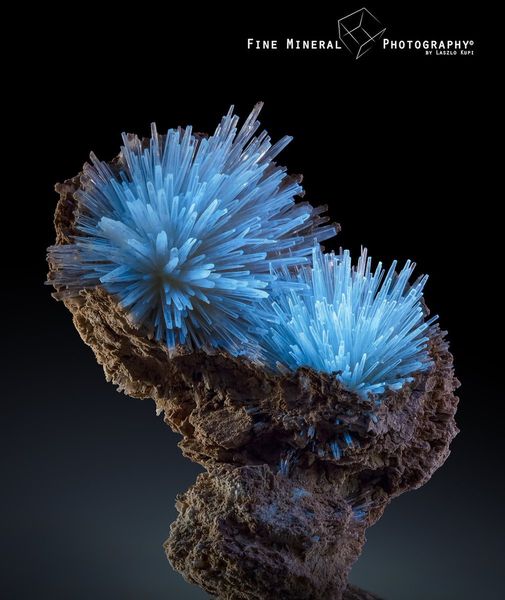
The Red Spessartite Garnet is a gemstone that belongs to the garnet family and ranges in color from orange to red-brown. The garnet family can be divided into two main categories: pyrospites (aluminum) and ugandites (calcium) garnets. The name “spessartine” comes from the German word “Spessart”, which means “forest”. The Spessart mountain range in Germany is where spessartine garnet deposits were first discovered in the 1880s.

Malachite is a mineral that forms near the surface of the Earth, specifically in the oxidizing zone above copper deposits. While it is not often found as a crystal, its crystal formations are usually green and have a translucent appearance with a vitreous luster. The color of malachite has been used as a pigment for centuries due to its ability to be easily ground into a fine powder. This mineral is one of the oldest known green pigments used in paintings, and its color remains vibrant over time, even when exposed to light.
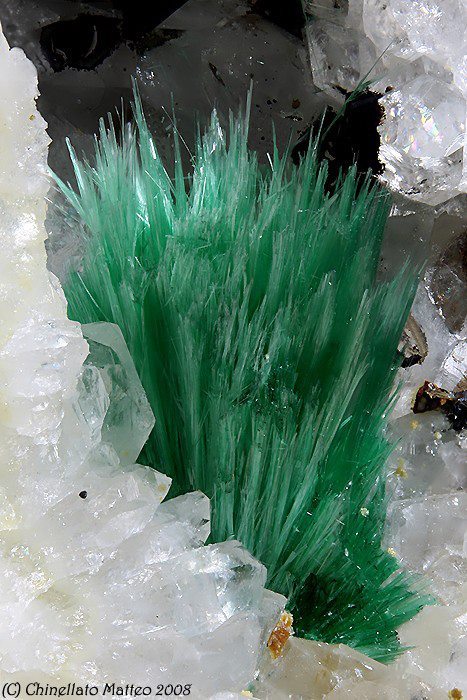
A cluster of smoky quartz is a beautiful and unique gemstone that comes in various shades of dark grey, brown, and black. This type of quartz can be found all around the world, but it is commonly found in Brazil, Scotland (UK), Switzerland, Australia, and Madagascar. The color of smoky quartz depends on the amount of radiation it receives from colorless quartz during its formation process in a semi-aqueous solution, as well as the presence of sodium and aluminum in its composition. While some smoky quartz crystals may be almost transparent, others may be opaque and appear brownish-grey or black.
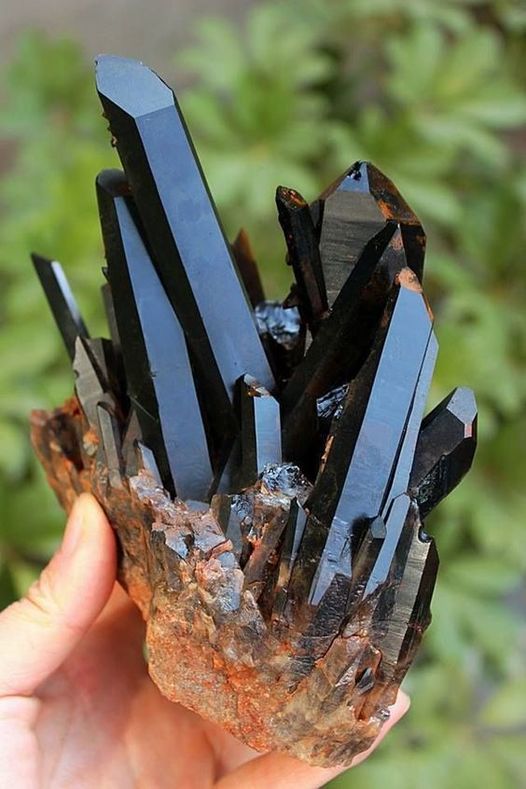
Veszelyite is a mineral that is rarely found in the oxidation zones of base metal deposits, and it contains copper and zinc. This mineral is typically emerald-green or blue in color, and it can be found in small, shiny clusters or crusts over other minerals. Although it’s rare, there have been cases when dense crystal aggregations of Veszelyite have been found. In the Palabanda Quarry, located in the Bouenza Department of the Republic of the Congo, irregularly dispersed formations of Veszelyite were recently discovered within the hemimorphite zone.
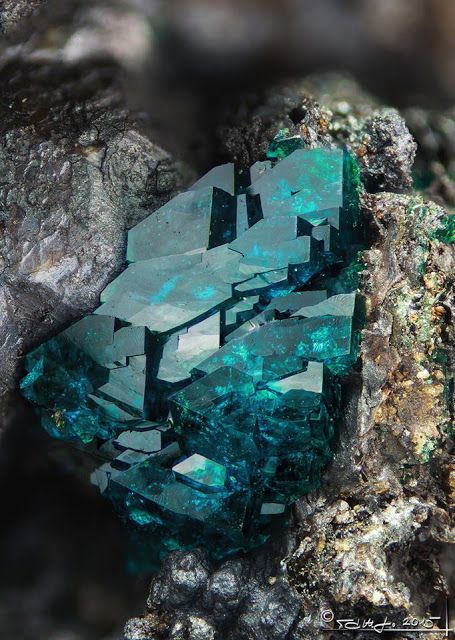
Radial crystals of Annabergite are composed of a hydrous nickel arsenate mineral that crystallizes in the monoclinic system, and is iso-morphous with Vivianite and Erythrite. This mineral was named by Henry J. Brooke and William Hallowes Miller in 1852 after one of its co-type localities, Annaberg in Saxony, Germany. The bright green color of Annabergite, which can also be light grey, light apple green, or white, makes it easy to detect and spot veins of nickel-bearing ore. In some cases, it can appear as a pale rose-red color when rich in cobalt. Typically, it is found as a green alteration coating on other nickel minerals.
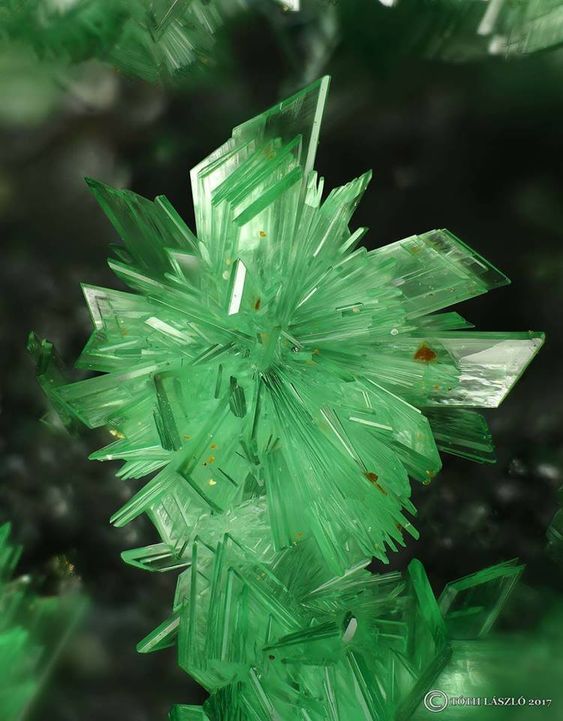
Wulfenite is a mineral composed of lead molybdate, commonly found in thin tabular crystals that are square or octagonal in shape with a narrow mid-section. It can also be found in earthy, granular masses. These crystals are often delicate and flaky, and they can form platy aggregates. The color of Wulfenite ranges from bright orange-red, yellow-orange to brown, and its color can vary widely. Some people refer to yellow Wulfenite as “yellow lead ore.” The mineral is named after Franz Xavier von Wulfen (1728-1805), an Austrian mineralogist.
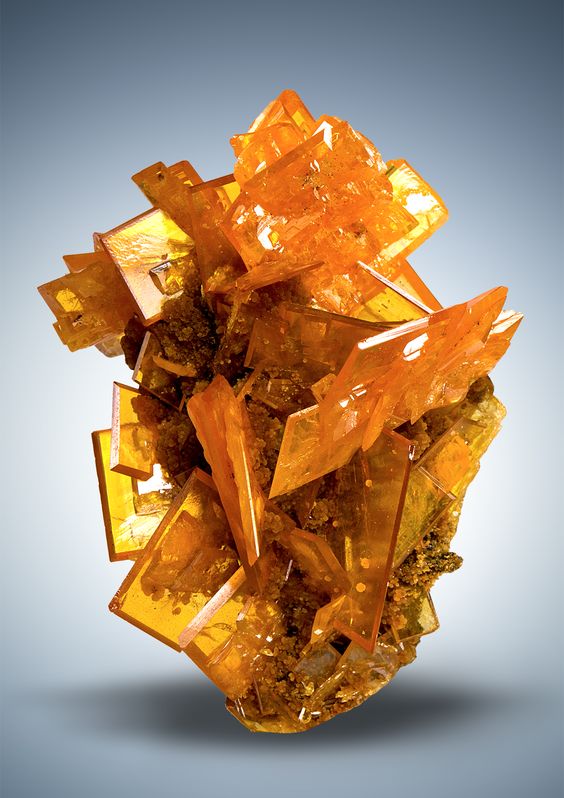
Tourmaline, along with lepidolite, is a group of boron silicate minerals that exhibit a common crystal structure and similar physical properties. However, their chemical compositions vary extensively, resulting in a wide range of colors and color combinations. In fact, tourmaline has the most diverse color palette among all mineral groups. It is possible for tourmaline to form large, well-formed crystals in cavities and fractures during hydrothermal activity. This occurs when hot water and vapors transport the necessary elements for tourmaline formation into pockets, voids, and fractures, creating an ideal environment for crystal growth.
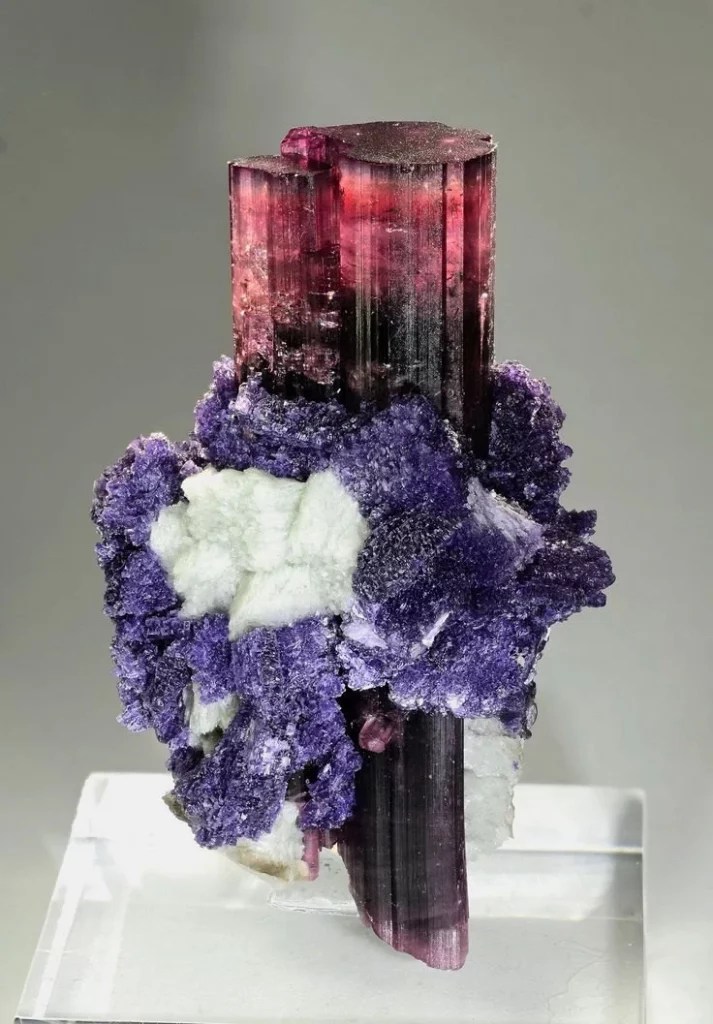
Red Beryl is a type of beryl that is incredibly rare and gets its red coloring from the presence of trace amounts of manganese. According to estimates by the Utah Geological Survey, only one crystal of red beryl is found for every 150,000 high-quality diamonds. The rarity of Red Beryl is due to its unique formation process, which requires specific geochemical conditions. For Red Beryl to form, there needs to be a significant amount of beryllium present, as well as a source of manganese at the same time and location. Additionally, the correct geochemical environment must exist for beryllium, manganese, aluminum, silicon, and oxygen to crystallize into Red Beryl.
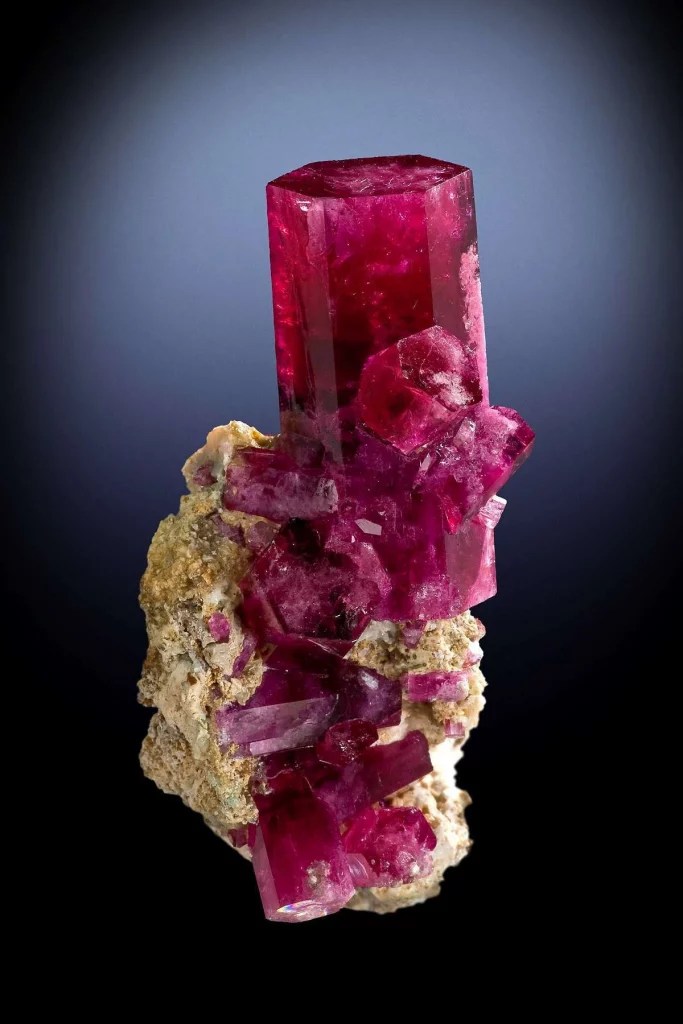
Dioptase is a rare mineral that typically forms in the oxidized zone of copper sulfide mineral deposits, commonly found in desert regions. Its color ranges from emerald-green to bluish-green and can be either transparent or translucent, with a glassy to sub-adamantine luster. Although beautiful, this copper cyclosilicate mineral is very delicate and must be handled with great care as it is highly fragile. It should never be subjected to ultrasonic cleaning as it may shatter. Ground up, dioptase can be utilized as a pigment for painting.
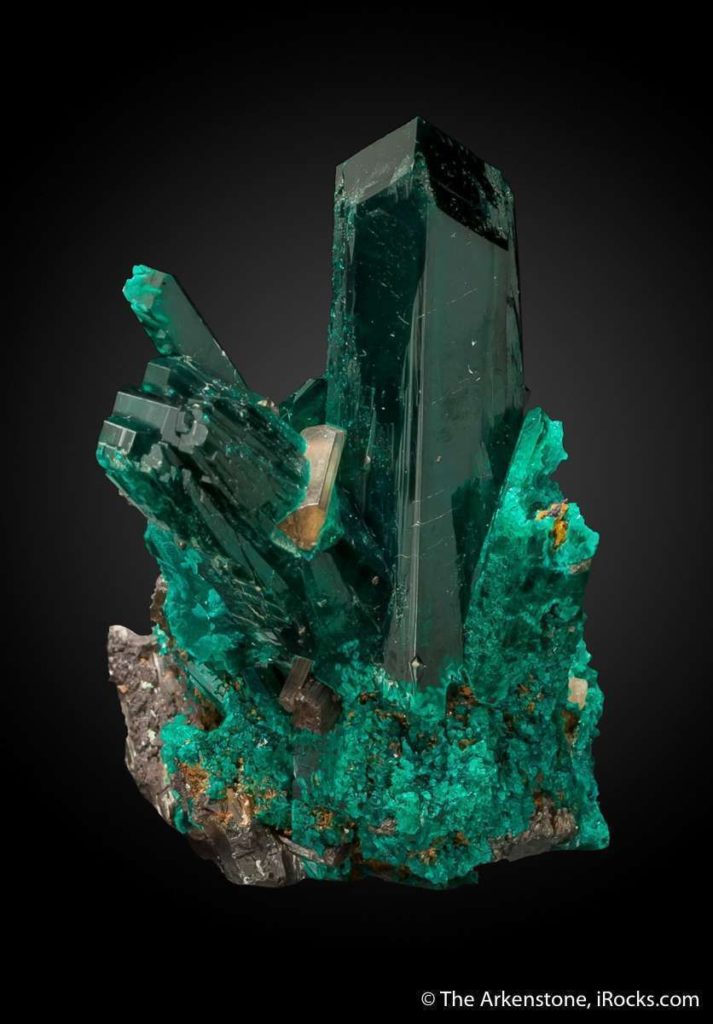
Rainbow Obsidian, also known as Heaven’s Eye, is a unique type of Obsidian that forms when molten lava rises from the Earth’s core and solidifies into a stunning glass that embodies both the elements of fire and earth. Upon first glance, this stone appears to be black or deep brown, but when polished and exposed to bright light, it reveals mesmerizing bands of iridescent colors such as red, blue, gold, violet, or green. These enchanting rainbow stripes are created due to the refraction of microscopic bubbles and nanoparticle inclusions of the mineral pyroxene.
